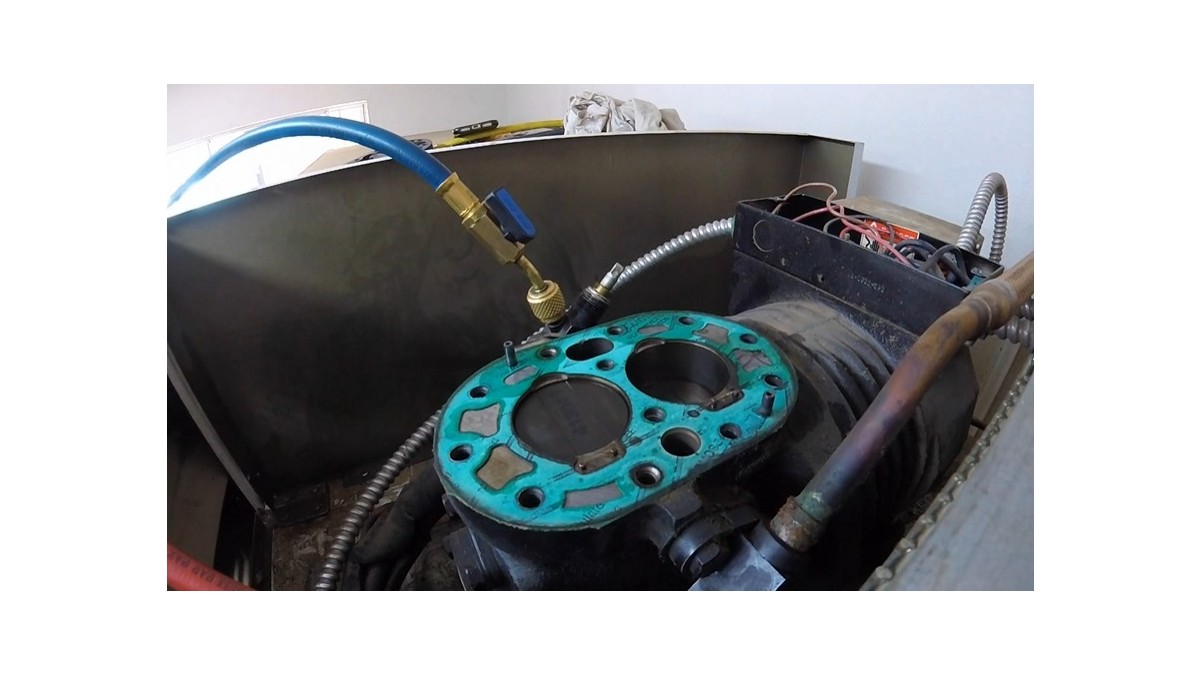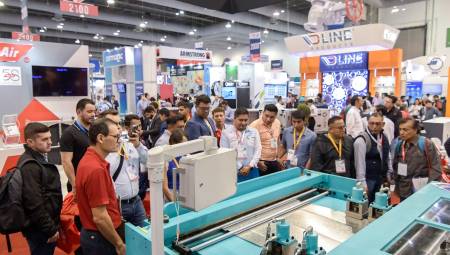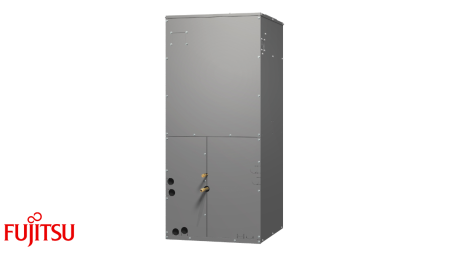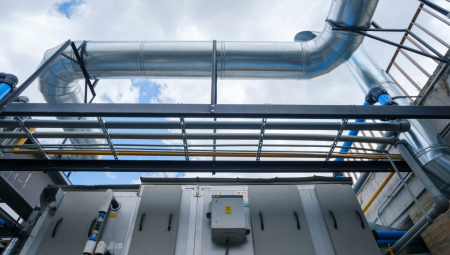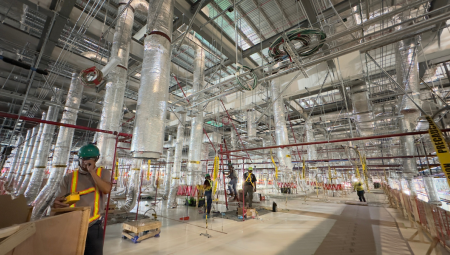Below, you will find a series of recommendations to clean this type of system, as well as to end failures and find solutions.
By Gildardo Yáñez*
In the field of commercial refrigeration, there are many aspects to which the technician must pay attention. As far as the service of semi-hermetic compressors is concerned, there is a detailed guide in this article on what to do in case of finding burns or how to identify mechanical failures in them. Repetitive compressor failure processes can be resolved if appropriate procedures are followed.
Typical mistakes occur with compressors due to not having the proper installation and service procedures in place. Some guidelines for cleaning and changing semi-hermetic compressors after a burn are listed in detail; also, how to determine the failure in a compressor and how to solve this problem.
System Cleaning
This section lists the step-by-step method for cleaning and changing a semi-hermetic compressor after a burn.
1. Recover the refrigerant with a gas recovery machine and collect the refrigerant in clean, empty cylinders. These machines are designed to recover and clean the coolant of any contaminants, leaving it ready to be used again.
All solid contaminants, moisture, acid, etc., will be retained by the dehydration filters that these machines have integrated.
If the system has a condenser that is cooled by water, or is used to cool liquid (chiller), the water must circulate at the time the refrigerant is being discharged; Or, all water should be drained before discharging coolant. This is to prevent the water from freezing inside the tubes and bursting them.

2. Remove the burnt compressor, being careful not to touch the oil or sludge with your hands. Avoid inhaling acid fumes.
3. Remove all accessories, such as dehydrator filters, liquid and humidity indicators, thermostatic valve, solenoid valves, shut-off valves, etc. The filter driers and the liquid indicator should be discarded. Valves should be inspected to decide whether to replace or clean and reuse. If the filters are refillable, discard only the desiccant blocks.
4. Sweep the pipes, condenser, and evaporator with nitrogen. Coolant should not be used for this procedure.
5. Install the valves and control devices, whether new or the same, after they have been thoroughly cleaned.
6. Install new filter driers in the liquid line and suction line. The liquid line must be oversized; that is, of a larger size than the original, and preferably as large as possible, as much as the space and diameter of the line allow. The suction line can be the recommended size, and should be installed as close to the compressor as possible.
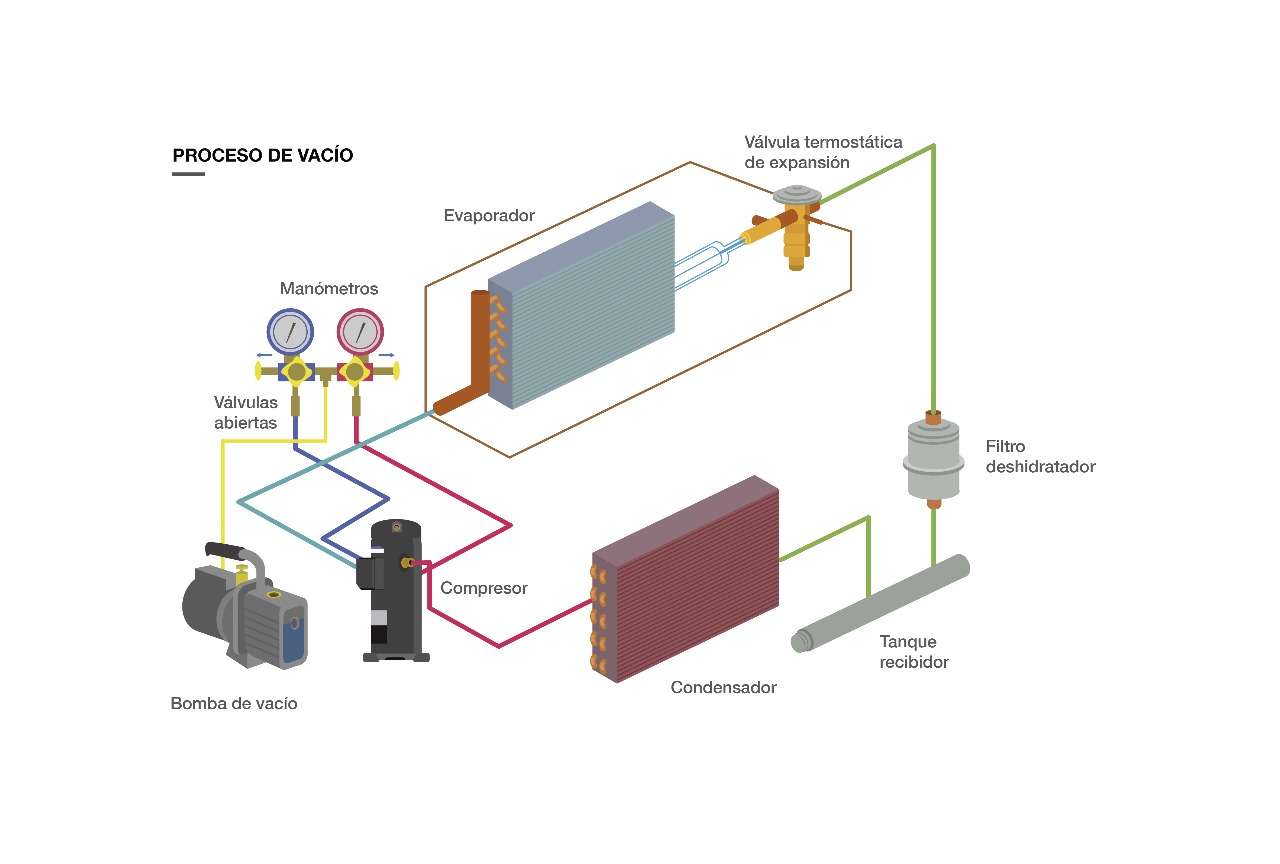
If they are rechargeable, only change the desiccant blocks.
The desiccant materials in the filters retain all types of contaminants, both soluble and insoluble. The suction filter will prevent particles larger than 5 microns from reaching the compressor and will also help complete the cleaning in one go.
A good liquid and humidity indicator should also be installed; After this, the liquid line dehydrator filter. This will indicate whether the filter or desiccant blocks will need to be changed to reduce the moisture content of the system.
7. If the system has an oil separator, it is most likely that the oil it contains is contaminated, and that its parts are impregnated with coal, mud, varnish, or with damaged compressor parts.
If the oil separator is of the detachable type, it must be uncovered and washed thoroughly. If it is of the sealed type, it must be replaced by a new one of the same capacity. In either case, its initial load of clean oil must be added, according to its instructions.
8. Install the new compressor. This replacement engine must be of the same capacity as the original. If it is a semi-hermetic replaceable motor, the compressor must be thoroughly cleaned before installing the new motor. This means not only removing carbon deposits and other burn residue from the engine compartment, but also cleaning cylinder heads and valves, as well as pistons, rings, and bearings.
There are no fast-acting solvents to remove deposits of carbon, gum and varnishes. The only solution is mechanical cleaning or changing parts. Remember that the real cleaning comes after putting the system back into operation.
Electrically connect the motor compressor and do a complete check of all electrical components.
9. It is advisable to place a small oil trap in order to obtain samples easily and make subsequent evaluations. One way to cheat on the suction line is by using a "T" and an access valve at the bottom. This will allow enough oil to be collected in a very short time to carry out the required analysis. Approximately 15 ml of oil is required to perform the acidity test.
10. Connect the manifold of pressure gauges to the compressor service valves, and through the service hose, pressurize the system to approximately 30 psig (310 kPa); Check for leaks. If no leaks were found, then the system pressure is raised up to 90 psig.
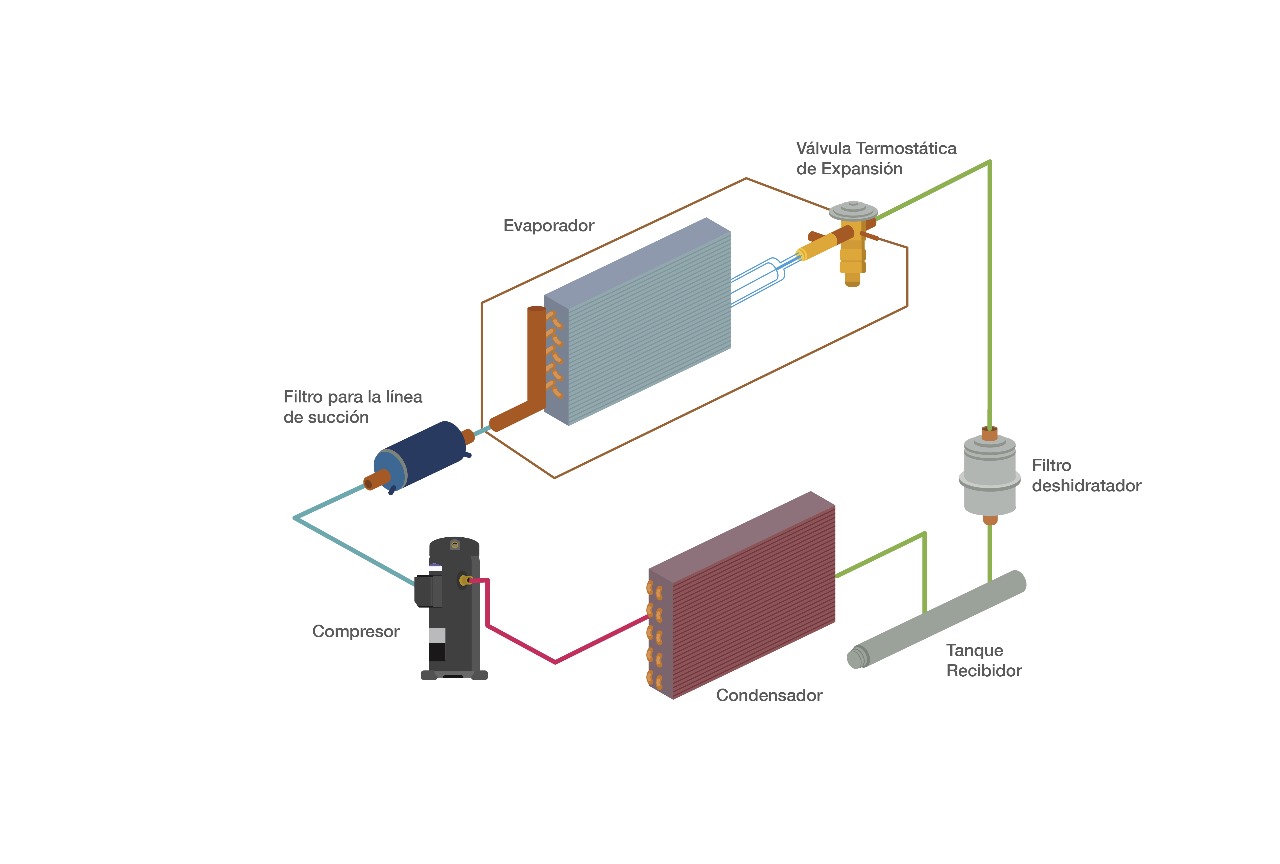
11. Once you are sure that there are no leaks in the system, the next step is to vacuum it with a good double-state vacuum pump. The compressor should never be used to make the vacuum.
With the evacuation of the system, all non-condensable gases and moisture are removed. The vacuum level should reach 500 microns or the 250 microns measured on a vacuum pressure gauge. At this pressure, all gases and moisture in the form of steam will have already been removed.
The manifold valves are closed, the vacuum pump is turned off and removed. If you want to test the tightness of the system, you can leave it empty for about 15 minutes with the vacuum pressure gauge connected, without any variation in pressure, although it is always better to test under pressure with nitrogen.
12. Charge the system with the appropriate coolant, according to the manufacturer's instructions. If the recovered coolant is to be used, charge it into the system through the filter drier.
13. Start the compressor and start operating the system. Wait a few minutes for it to stabilize, and then check the thermo-expansion valve and controls for overheating. Adjust if necessary.
Record the initial pressure drop through the dehydrator filters. This should be considered very important, because the pressure drop will give the guideline for the replacement of dehydrating filters or desiccant blocks. The initial pressure drop should not be increased until the desiccant blocks are more than 50 percent loaded with contaminants.
Cleaning of the system is carried out during the operation of the system. The oil's affinity for contaminants and the solvent action of the coolant will trap all dirt and clean all embedded parts with charcoal, mud, varnish, and other burn products. When the oil and coolant pass through the dehydrator filters, they are cleaned leaving all the contamination in them.
The gradual accumulation of these contaminants will cause the pressure drop through the dehydrator filters to increase. This drop should be monitored for the first four hours of operation. When the pressure drop exceeds the maximum values of 8 to 10 psig, the desiccant blocks or the dehydrator filter should be changed.
14. Many technicians consider that, up to this point, the cleaning has been completed; However, to do the best job possible, you should continue until you are sure that the system is clean.
Between eight and 24 hours of operation, take an oil sample and analyze it with an acidity tester and observe the color. If the oil is clean and acid-free, the cleaning is complete. If the oil is dirty or acidic, change the dehydrator filters or desiccant blocks. If necessary, the compressor oil can be changed, although the recommendation is that every time the filter drier and suction filters are changed, the oil should also be changed.
After another 24 hours of operation, another oil sample should be taken and tested to make sure the acid level has dropped below 0.05 percent.
When the last change of dehydrating filters is made, those of the size normally used by the system should be installed, leaving them permanently installed.
15. Simultaneously with the pressure drop and acid level checks, the moisture content of the system must also be checked; since it is another parameter to determine the change of the dehydrator filters or desiccant blocks.
16. Up to this point, you can be sure that the system is completely clean. To ensure that the operating conditions are satisfactory, it is recommended to check the system again in two weeks.
* Eng. Gildardo Yáñez. I help strengthen the knowledge of Refrigeration Technicians. Throughout my career I have trained hundreds of technicians in Mexico and Latin America. Industrial Electrical Engineer, with a Master's Degree in Administration. 40 years of professional experience, 30 of them in the Refrigeration Trade. Training and Applications Manager at BOHN de México.
https://www.gildardoyanez.com/


